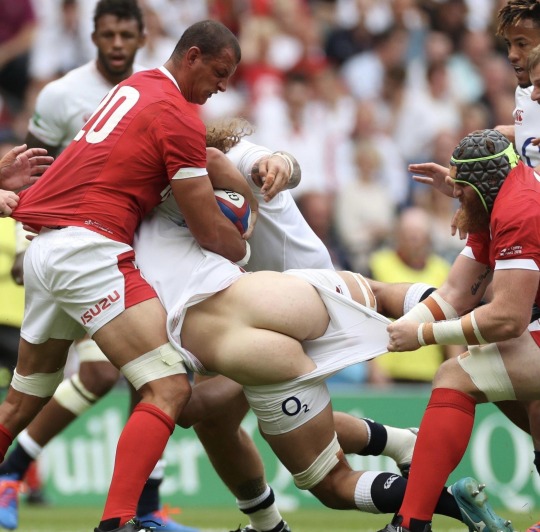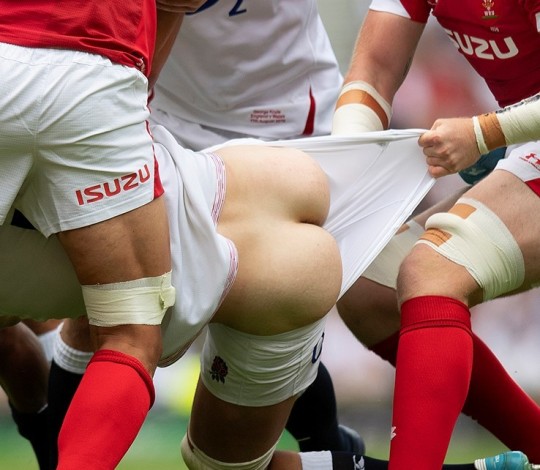#boys sports
Explore tagged Tumblr posts
Text

By: Gregory Brown
Published: Sep 1, 2023
About the Author
Dr. Greg Brown is a professor of Exercise Science at the University of Nebraska at Kearney where he also serves as the Director of the LOPERs General Studies program. His primary teaching responsibilities are undergraduate and graduate courses in Exercise Physiology, but he has also taught courses in Introductory Anatomy & Physiology, Sports Nutrition, Research Methods, and Professional Development in Exercise Science. His research has evaluated the effects of nutritional supplements on the physiological response to exercise, the physiological responses to various types of exercise, effective teaching in the exercise science program, and sex-based differences in sports performance. He has authored or co-authored over 50 peer reviewed publications and serves as a peer-reviewer for over two dozen academic journals. He is a member of the American College of Sports Medicine (ACSM), the National Strength and Conditioning Association (NSCA), and the Association of American Educators (AAE).
He and his wife (Amber) have two adult sons and one daughter-in-law. Sadly, both their cat and dog passed away in the past year. His hobbies include running, hunting, fishing, studying history, and watching movies.
--
In the current battle over women’s and girls’ rights to female-only sports, a commonly heard mantra is that there are no sex-based differences in sports performance before puberty. Those who make this claim often contend that if a male is put on puberty blockers before age 12 (or Tanner development stage 2; whichever comes first), he can compete fairly in the female category. But is this really true?Are there really no differences in athletic performance between boys and girls before the onset of puberty? Do puberty blockers administered to children really erase male sex-based athletic advantages? Below, I’ll try to provide answers to these questions.
Like many things currently being put forth in public discourse as settled science, the presence or absence of sex-based athletic differences before puberty is not an open and shut case. There are few databases of records for children’s competitive sports performance and there has been limited scholarly research evaluating sex-based differences in competitive sports performance before puberty. Currently, there are no consensus statements from professional organizations such as the North American Society for Pediatric Exercise Medicine (NASPEM), the National Strength & Conditioning Association (NSCA), the American College of Sports Medicine (ACSM), or the National Athletic Trainers’ Association (NATA) stating that there are, or are not, sex-based differences in athletic performance before puberty.
Below, I will cover the main reasons our data on pre-pubertal sex differences in athletic performance is relatively poor, and draw some preliminary conclusions based on the data we do have that indicates such differences are actually quite significant.
Lack of Records
One challenge that arises when trying to determine whether there are sex-based differences in athletic performance before puberty is the limited availability of records documenting competitive athletic performance in children. For adults participating at the Olympic and collegiate levels, meticulous record-keeping is the norm, and these records are readily accessible online. A simple internet search yields numerous listings of Olympic and collegiate records spanning various sports such as swimming, track and field, cross country, bicycling, and more.
Similarly, records for sports in secondary schools are also carefully maintained. In the United States, it is fairly easy to obtain the results of the most recent state high school track championship from news sources and on the state scholastic athletic association websites. Most secondary schools additionally showcase records for track and field, cross country, and other sports. The abundant availability of records in the Olympic, college, and secondary school arena makes it very easy to compare male and female athletes competing in the same events at the same level of competition. Such comparisons vividly illustrate that once puberty sets in, males outperform females by 10-30 percent (depending on the sport and event).
However, most sports involving pre-pubertal children operate outside the jurisdiction of state scholastic athletic association or even the local primary school. Instead, these activities are typically organized by local clubs or community recreation departments. Children’s sports often prioritize recreation and skill development over competitiveness. As a result, records pertaining to race times, throwing distances, weightlifting achievements, or other athletic benchmarks for children are not as meticulously maintained or as readily accessible as records for high school, college, or Olympic sports. Some have interpreted the lack of records for children’s sport as an indication that any sex-based differences in athletic performance before puberty are negligible or insignificant.
Lack of Scholarly Attention
Adding to the challenge of limited records detailing competitive athletic performance before puberty is the constrained number of available scientific evaluations. For example, Handelsman [1] analyzed publicly accessible data on swimming, running, and jumping in children and adolescents. Although his data clearly illustrate that boys aged 10 and under run faster, swim faster, and jump farther than girls of comparable age, he published these findings in 2017 in a paper titled “Sex differences in athletic performance emerge coinciding with the onset of male puberty.”
In 2019 Senefeld et al. [2] drew upon data from USA Swimming and found that, before age 10, the top 5 girls swam faster than the top 5 boys. However, no disparities in swimming performance were observed between the 10th-50th ranked girls and boys. Additionally, in 2020, Huebner and Perperoglou [3] reported that there were no sex-based differences in competitive weightlifting performance before age 10. To my knowledge, these studies represent the only scholarly examinations of competitive performance in children before puberty.
Taken together, the scarcity of sports records for pre-pubertal children and the limited scholarly output on children’s competitive performance has led some to conclude that there are no differences in athletic performance between boys and girls before puberty. Some have even gone so far as to erroneously asserting that a broad consensus exists regarding the absence of sex-based differences in athletic performance before this developmental stage. However, this does not appear to be true, and in the sections below I will present information that demonstrates the existence of sex-based differences in athletic performance before puberty.
School Based Fitness Testing
In contrast to the limited records available for sports performance and the scarcity of scholarly evaluations regarding children’s competitive sports performance, there exists a plethora of scholarly evaluations focused on school-based physical fitness testing in children as young as six years old. Various tests, such as the Presidential Fitness Test, FitnessGram, Eurofit Fitness Test Battery, and other school-based physical fitness assessments, consistently show that boys tend to outperform girls of the same age in tests measuring muscular strength, muscular endurance, running speed, aerobic fitness, ball throwing, and kicking distance. On the other hand, girls tend to perform better than boys in tests assessing flexibility.
A small sampling of publications evaluating school-based physical fitness testing includes a longitudinal evaluation of 240 German boys and girls aged 9-12 years [4], an analysis of 85,347 fitness test results among Australian boys and girls aged 9-17 years [5], an evaluation of 424,328 Greek boys and girls aged 6-18 years [6], a study examining 1,142,026 performances in a 20-meter shuttle run among boys and girls aged 9-17 year from 50 countries [7], and an assessment of 2,779,165 Eurofit performances among boys and girls aged 9-17 year from 30 countries [8].
Collectively, these studies (along with many others not listed here) indicate a consistent pattern: before puberty, boys tend to outperform girls of the same age in tests measuring muscular strength, muscular endurance, running speed, aerobic fitness, ball throwing, and kicking distance. Conversely, girls typically exhibit better performance in tests focused on flexibility. While physical fitness tests do not always accurately predict success in competitive sports, physical fitness is often a prerequisite for success in sports.
Sports Records
USA Track and Field (USATF) sanctions youth track and field meets in most states, including regional and national championship events. The youngest age categories in USATF are the 8-and-under and the 9-10-year-old age groups, both of which can reasonably be assumed to represent pre-pubertal athletes. Upon evaluating the performances at the USATF state-level Junior Olympics, it becomes apparent that boys frequently jump and throw farther, and run faster than comparably aged girls.
For instance, if we examine the race times for the 100m, 200m, 400m, 800m, and 1500m races, along with the distances achieved in shot put, javelin, and long jump events in the 2023 USATF Nebraska Association Junior Olympics [9], for both boys and girls in the 8-and-under age group, we find that no girl would have outperformed a boy to secure the gold, silver, or bronze medals in any of these events. For the same events in the 9-10-year-old age group, only one girl would have secured a gold medal (out of a possible 8), while two girls would have clinched silver medals (out of 8), and another two girls would have won bronze medals (out of 8). Of course, one could reasonably argue that data from a single youth track meet in Nebraska may not be representative data for pre-pubertal athletic performance as a whole.
So, if we make the same comparison in the same events (100m, 200m, 400m, 800m and 1500m races, and the distances for shot put, javelin, and long jump) in the 2023 USATF Arizona Association Junior Olympics [10], we observe that girls in the 8-and-under age group would have secured zero gold medals, one silver medal, and two bronze medals. In the 9-10-year-old category, a girl would have tied with a boy for a single gold medal, and three girls would have taken home bronze medals. Yet, once again, one could reasonably argue that the combined data from track meets in Nebraska and Arizona may not accurately represent the broader spectrum of pre-pubertal athletic performance.
So, if we make the same comparison for the same events (100m, 200m, 400m, 800m and 1500m races, and the distances for shot put, javelin, and long jump) at the 2023 USATF National Youth Outdoor Championships [11]—an event that includes athletes from many different states—we discover that girls in the 8-and-under age group would have won two gold medals (out of 8), three silver medals (out of 8), and no bronze medals. Girls in the 9-10-year-old age group would have won a single gold medal, two silver medals, and two bronze medals. Collectively, looking at these three track meets, placing side by side the race times for the 100m, 200m, 400m, 800m, and 1500m races, as well as the distances for shot put, javelin, and long jump for boys and girls in the 8-and-under and 9-10-year-old age groups, it’s clear that if girls were to compete against boys, they would have secured only 23 out of 144 medals. Within this tally, girls would have received only five out of 48 gold medals.
Of course, one could reasonably argue that the examples above represent only a single year and only three specific track meets. However, if we evaluate the overall youth records for the best performances in running, throwing, and jumping from USATF [12], the USATF National Junior Olympics [13], and the School Sport Australia Track & Field Championships [14], they collectively indicate that boys aged 10 and under outperform girls of the same age across all recorded events. On average, boys outperform girls by 3 percent in running, 9 percent in jumping, and 16 percent in throwing events. Similarly, records for boys aged 10 and under in USA Swimming show faster times than girls' records in 18 out of 22 events [15].
While examining medal counts at specific track meets offers valuable, albeit somewhat anecdotal, insights into performance differences between boys and girls before puberty, these counts do not qualify as a rigorous scientific evaluation. Though scholars often use evaluations of overall records for best performances to showcase sex-based differences in adult athletic performance, disparities in pre-pubertal children’s performance are frequently dismissed as being too small to be meaningful. Moreover, the overall youth records from USATF have not been updated since 2018, the records from the USATF National Junior Olympics have not been updated since 2019, and the School Sport Australia Track & Field Championship records have not seen updates since 2016. It’s unclear why these records have not been updated, but it does raise some questions about the accuracy of these records.
Nonetheless, by considering scholarly assessments of school-based fitness test data, several youth track meets, track and field best performance records, and swimming best performance records, it certainly seems like there is an emerging pattern of pre-pubertal male sex-based athletic advantages.
Scholarly Evidence for Sex-Based Sports Differences Before Puberty
Some colleagues and I have recently presented an assessment of sex-based differences in athletic performance before puberty at the 2023 Annual Meeting of the American College of Sports Medicine [16]. Drawing upon a national database of track and field performance (athletic.net) and evaluating the top 10 performances for boys and girls in the 8-and-under and 9-10-year-old age groups over a 5-year period, we observed consistent trends. Boys consistently (and statistically) ran almost 5 percent faster, long jumped 6 percent farther, threw the shot put 20 percent farther, and threw the javelin 40 percent farther than girls of the same age. At the 2023 Annual Meeting of the American College of Sports Medicine, a separate team of researchers from a different university used the same database, albeit with slightly different evaluation methods, and came to similar conclusions regarding the pre-pubertal advantages of male athletes [17].
In light of these findings, it is reasonable to conclude that male athletes indeed possess advantages in sports performance before reaching puberty. This conclusion is founded on extensive scholarly evaluations of fitness tests in schools, data gleaned from youth track meets and records, as well as youth swimming records for best performances. My personal analysis of the top 10 national track and field performances for boys and girls within the 8-and-under and 9-10-year-old age groups across a 5-year period supports this, further corroborated by similar outcomes from another team of researchers. Admittedly, the sex-based disparities before puberty are less pronounced than after puberty, but they exhibit a consistent pattern that yields a statistically significant difference favoring male athletes.
What about Puberty Blockers?
Whether there are, or are not, sex-based differences in athletic performance before puberty still leaves questions about how puberty blockers affect athletic performance. The truth is, we don’t have enough information to answer questions about how puberty blockers affect athletic performance. There are no published studies evaluating the effects of puberty blockers on muscle strength, muscle endurance, running speed, aerobic fitness, as well as throwing or kicking distance in children, whether in school or laboratory settings. Similarly, there is no research on how puberty blockers might impact performance in competitive sports. Limited studies have touched upon the effects of puberty blockers on body composition and height.
Two long-term studies investigating the impact of puberty blockers on body composition and height indicate that the sex-based differences in lean body mass [18] and height [19] persist even after 2 years on puberty blockers followed by an additional 6 years of so-called “gender-affirming hormone therapy.” It is undeniable that male advantages in lean body mass and body height translate to athletic advantages as adults. It’s reasonable to assume that these advantages also extend to athletic performance among children and adolescents. The sex-based differences in performance in children may be smaller than in adults, but small differences can mean the difference between a gold medal and no medal in sports.
Conclusion
Readers of Reality’s Last Stand will be familiar with the important sex-based differences between males and females. These differences begin at conception and continue throughout one’s life. Sex-based anatomical and physiological differences confer inherent athletic advantages to males when compared to females of the same age, possessing similar talents and undergoing similar training, across all age groups, even before puberty. Having a transgender identity, with or without the use of cross-sex hormones, does not eliminate sex-based differences in anatomy and physiology, nor does it erase sex-based differences in athletic performance.
It is my opinion that, in order to maintain a level playing field for female athletic competition, transgender identified males (i.e., “transgirls” and “transwomen”) should not be allowed to participate in the female sports category before or after puberty even when puberty blockers are used.
#Greg Brown#sports#female sports#male sports#womens sports#girls sports#mens sports#boys sports#athletics#female athletes#male athletes#cheating#sex based differences#sex differences#anatomy#physiology#athletic performance#gender ideology#queer theory#gender identity ideology#genderwang#gender identity#puberty#puberty blockers#religion is a mental illness
4 notes
·
View notes
Photo

🏐 🎒
Newly styled team colors volleyball backpacks for boys or girls in a variety of team color combinations | easily customize the athlete's name & jersey number as well as team name
https://www.katzdzynes.com/2023/04/new-design-style-volleyball-backpacks.html
6 notes
·
View notes
Text
#rugby#athlete#sports#jock#gay#gay men#gay tumblr#gaylife#gaystagram#gay boys#gay guy#gay man#gayboy#gayguy#gayman#gayhot
12K notes
·
View notes
Text

Dropkicks this thing out of my Procreate gallery before I ruin it with more filters.
#grey art#hazbin hotel#hazbin hotel fanart#alastor#human alastor#oh boy they don’t look very much alike tough 😂#I love angsty symbolism#look at him holding his own corpse !#I’ll take it from here old sport! 😈#cw blood#blood
4K notes
·
View notes
Text
lando and oscar: *managed by a shitshow of a team and therefore clash with each other*
nico rosberg, from several kilometers away: I CLASHED WITH MY TEAMMATE ONCE. it was the spring of 2016, even the brilliant rays of sunlight couldn’t melt the frozen shards of the love i gave to–
oscar: lando and i bought each other flowers today :)
#f1#f1 memes#landoscar#brocedes#nico rosberg#lando norris#oscar piastri#op81#ln4#formula 1#mclaren#sky sports f1#oh nico#eight years and counting#britney#britney i’m sorry to tell you but reliving your trauma vicariously through some orange cat boy twinks is not going to heal you
2K notes
·
View notes
Text

shhhh
#my art#jujutsu kaisen#jjk#jjk fanart#jujutsu kaisen fanart#jjk art#yuji itadori#fushiguro megumi#itafushi#fushiita#jjk spoilers#jjk manga spoilers#tortured megumi fr three and a half draws in a row so now he can nap with his bf as a reward#thanks fr always being such a good sport megumi gomennnnnn#it's always a bit jarring going back 2 simple fluffy pieces after weeks of the heavier stuff#bc on one hand it's nice 2 just draw sth cute. but on the other hand i am like what am i supposed 2 Yap abt now!!!#wym they r just cuddling wym there is no Lore#the only thing abt this piece tht digs a bit deeper is th fact tht - unbeknownst 2 me while i ws sketching -#the pose ended up w them in the shape of an anatomically correct heart#patting my subconscious on th back fr that one . itfs heart imagery my beloved#also yuuji Koala itadori the absolute psychopath 100% th type 2 sleep in a hoodie without overheating . poor megumi smh#not only does he have 80kg of Boy practically On him but all th added heavy fabric on top of that#he may look peaceful here but best bet this boy is not getting a full 8 hours#maybe in its own way this too is a hina tortures megumi draws#i think he'll forgive me tho smile. he'll forgive yuuji too
2K notes
·
View notes
Text
Steve and Eddie get a little studio apartment in the queer section of the city, by virtue of Steve getting hired as the building’s handyman. Half the residents are drag queens and there are RULES.
They can flirt with Steve all day long. Eddie (literally) will hiss and spit like a jealous cat, all red faced and pouting, which is INCREDIBLY entertaining. While the flirting is harmless, Steve’s pleased smile about how possessive Eddie is over him can melt the most cynical old queen’s heart. (They all think a lil “you’re welcome, Steve” for getting Eddie all riled up ever night.)
However, anyone who flirts with Eddie better be prepared. Steve’s glare is cold and cutting, and the silence after is worse. And if you piss him off enough, Steve is all for revenge. Better hope your toilet does clog or your sink keeps draining. Worst case is he’ll MAKE issues for you, until you make it up to him. And the only way to do that is to go support Eddie’s underground metal band and spend your hard earned money on his merch. (Eddie thinks Steve being a stone cold jealous bitch is hot.)
#steddie#shush mal#Steve’s a good sport 98% of the time tho#just don’t hit on his boy#Steve’s also the only one they can get into drag#Eddie refuses bcs he’s wrapped up in his big tough metal head persona still#they’ll get him eventually#my steddies
3K notes
·
View notes
Text
Crystal snorts at Charles. “Yeah, well, you would say that, you’re a jock.”
Charles’s head tilts to the side. “Jock? Why - oh, ‘cause of the cricket bat? Nah, mate, that’s just a convenient blunt object. Never played a sport in my life, ‘cept a bit of pickup footie. I was a nerd,” he turns to grin at his partner, “like Edwin.”
Edwin raises an eyebrow. “I’ll have you know that at the time of my death, thanks to my skill at fencing I had earned the most athletic trophies of any individual at St. Hilarion’s.”
Crystal stares at them both and struggles to readjust her entire worldview.
#I’m aware this is not canon given Charles’s line about ‘no matter how good I was at sports’ etc#but it’s one line and I can ignore it for amusement purposes#dead boy detectives#edwin payne#edwin paine#charles rowland#mine
886 notes
·
View notes
Text



Hey, don't cry. Ghost yuri, okay?
(Now that you know the girls, they need to meet the boys!)
#payneland#edwin x charles#dead boy detectives#dbda#fem payneland#although technically as everyone is the opposite gender their last names should be different#OKAY you know the drill u get fanart and i get to ramble about it#Edith wears pants now#this pains me because i love drawing skirts but after she escaped hell#she met charlotte who made an offhand comment about how it's easier to move with pants#and edith who just spent 70 years running in hell went wait a tick#she feels safer that way is what i'm saying#interesting because as you can see she wore a skirt to confess and we know how THAT went but anyway#charlotte's mom was abusive of course#and she forced her to practice ballet despite charlotte being interested in a lot of other sports#she did fairly well at ballet but this means no cricket bat :(#i know we all love butch fem charles but as he's mostly gender conforming i decided to not do that#no reason for the bracelets but as i wanted to give her a choker i thought they would combine with the earrings#crystal is still crystal because his parents are weird artists who like stupid names#niko though... i don't know what to name him#dead girl detectives
1K notes
·
View notes
Text







1K notes
·
View notes
Photo

⚽️ 🥳
Soccer themed party invitations and table decor in a variety of design styles & color themes -- easy-to-personalize text templates can be customized to suit your birthday or team celebration
https://www.katzdzynes.com/2021/04/soccer-themed-party-invitations.html
#soccer party invitations#soccer birthday#kids sports party#soccer team party#girls sports#boys sports#girls soccer#boys soccer#soccer celebration#kids party ideas
2 notes
·
View notes
Text
Matthieu Chazal (French 1974-2024) Tournoi de lutte à l'huile à Edirne Turquie, 2016

Matthieu Chazal ( 1974-2024 )
Tournoi de lutte à Edime, Turquie, 2016
16 notes
·
View notes
Text
The Corroded Coffin boys know that Steve and Eddie are dating way before Eddie tells them because he starts using sports terminology during band practice.
#here in the tags is where I’d put an example of Eddie using sports phrases but I don’t know any#except like ‘hit it out of the park’ but that’s too basic to give him away#I feel like people are playing a practical joke on me when they say they like sports bc I don’t get it#except I do think all the CC boys Eddie included would love professional wrestling#eddie munson#steve harrington#corroded coffin
578 notes
·
View notes
Text
To be clear, while I DO spoil my beautiful and handsome cat son,I don't mean that I spoil him in a chew-my-shoes, overfeed-him, give-him-people-food, wander-off-leash kind of way.
I spoil him like a well-to-do businessman would spoil his one and only firstborn son with a sugar lolly during Sunday promenade at the pier, where he might traipse about in his little sailor suit and watch the boats go by.
#My strapping young lad#Looks just like his father#Plays s sporting round of shuffleboard as well#“Papa may I have a shiny new marble for my games”#Why yes indeed my boy#Now eat your preserves#Put some hair on your chest#Later we'll see about having a ride on the ponies#Ollieposting
1K notes
·
View notes
Text
Why do I keep seeing transmascs and trans men insisting or implying that all trans men are "female socialized," or "understand the female experience," or "navigated the world as a woman." Because yeah, sure, that can be true for some people. especially if you weren't gnc at all as a kid and didn't crack your egg until well into adulthood, it makes sense.
But they don't stop at saying they had that experience. It always comes with an addendum that trans men, as a group, all can relate to this experience. I don't know about the entirety of my demographic, but I never got even a little bit of what some of them talk about. I didn't even believe that women were scared of going out at night until I kept consistently seeing them say it, online or wherever, for years. I never realized catcalling was a thing until I saw some women complaining about it on reddit.
But they posit it as some sort of, you're safer than cis men, right? You know what it's like? Which, on top of being patently, demonstrably false in the case of myself and many other trans men, holds some unpleasant and often outright hostile implications about trans women. And they always deny it, but if you can't even conceptualize someone like me who grew up gnc, and never got the bulk (or any?) of whatever we consider to be 'female socialization,' what does that say about what you think trans girls went through, growing up? I don't want to speak for them, as I've never experienced that firsthand, but I can guarantee that (if you're even a little bit obviously trans) people don't treat you like a cis kid of the opposite gender. By and large, they don't get treated like cis boys.
It just makes me mad that we're taking this inaccurate framework that (ever so conveniently) puts trans people into the box of our assumed birth gender, and trying to fancy it up and use it with a faux-progressive veneer; never mind the way that transphobes use it to bar trans women from being athletes, or using the bathroom, or having access to any gendered resources they need. It would be bad enough to try and dust it off and use it even if it were largely accurate, due to the aforementioned connections to outright transphobia, but it literally is patently false. Not in all cases, obviously, but why are we trying to revamp this untrue, inaccurate generalization and pretend that we can make it 'trans-inclusive?'
#o.#trans#transphobia#transmisogyny#I may or may not be talking about a specific post I saw that made me irritated but I didnt wanna get in an argument with internet strangers#sorry guys I'm still heated over freaking collin allred capitulating to ted cruz and throwing trans girls under the bus bc he didnt have the#guts to stick to his morals#and called them ''this idiotic business with boys in girls sports'' or some crap#as if trans girls don't deserve to play the sports they love. like I imagine if they blocked trans men from being physicists or something#and I just wasn't able to pursue the career I want? that would destroy me#and I still had to vote for him because the other options were ted cruz and some freaking libertarian.#sorry thats all tangential but can we not use the same rhetoric that all these politicians do as an excuse to kick trans women out of public#life PLEASE 🙏#...also I really hate the Popular Transmasc Ideology that says that we all experience life as basically the same as a cis woman & never have#to navigate having male privilege & being an ally to women#and all have some sort of Innate Connection to femaleness or womanhood or whatever bc 'obviously' we all grew up just like girls do#ugh#this one's going out there sans editing so dont yell at me if I worded smth weird please 🙏
888 notes
·
View notes



